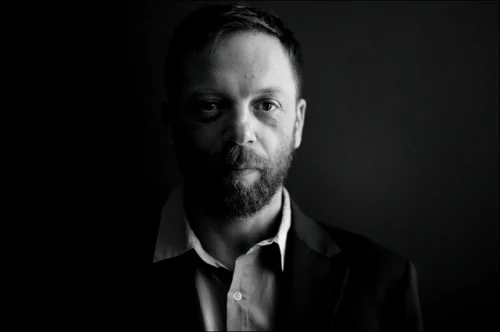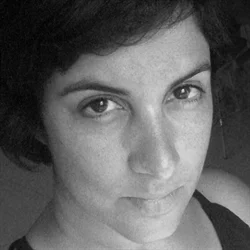Video Art
Curated Exhibition // Summer 2018
During the last decade we feel technology should be everywhere and nowhere at the same time, perfectly integrated into our everyday experience, or our homes, without intruding. The future art audience has technology in their everyday life; through technology they experience the world around them, and this is what connects them to
one-another.
The Niio Featured Exhibition is dedicated to the moving image and public space, aiming to present curated screening programs to a wider audience. It is based on the idea of mediating works from an extended list of contemporary video artists, through new digital exhibition formats and cloud-based platforms.
Ori Gersht
Big Bang
Ori Gersht made Big Bang in 2006 specially for this exhibition. In it, he evokes twilight via a fusion of the sirens that sound in Israel and that he remembers from his childhood. There is the siren at dawn and dusk on Holocaust Day and Memorial Day that signals the call to remembrance; and the 'all-out war' siren that tells citizens to take shelter in the event of an imminent attack.
Nira Pereg
67 Bows
For this piece, Pereg spent time studying a flock of the zoo’s flamingos. She discovered particular qualities in the behavior of individual birds by setting up situations in which group responses were expected. Employing various camera angles, the artist offers sumptuous close-ups of these exotic animals calmly going about their instinctual business. Over the muffled noise of the birds’ squawks and clucks, she adds a provocative soundtrack of intermittent, startling noises, implying human disturbance of their peaceful realm. The result evokes a sense of suspense in the viewer, while calling into question the relationship between what is seen and heard.
Shahar Marcus
Homecoming artist (Dresden)
In the performance homecoming artist the artist Shahar Marcus driving with two young models at the back seat at the heart of the city of Dresden in Germany. During the ride the people of the town are being asked do they know or heard about the artist. None of the people know and most of them don’t care about art at all. Never the less while riding slowly around the city Marcus is waving to the people and the people are waving him back as if he is a known celebrity or a local Politian who is doing his campaign election right now. The drive implicates the gap between the art scene and the common citizen in small towns.
Nevet Yitzhak
WarCraft
The exterior frame of the horizontal rug depicts multi-coloured tanks on a golden yellow background while the tanks and warplanes, as well as tiny automobiles and schematic representations of human subjects, are digitally woven into a rich indigo field. The frame of the rug that appears to float on the wall includes serially repeated bright-orange tanks stitched onto a brown-orange background: warplanes, helicopters and trucks populate the interior.
The rugs take on a political and aggressive edge that is heightened when the signifers of war begin to unmoor themselves. Planes from one rug seemingly fly to the other and drop bombs that burn holes in it, and tanks fire across screens creating bullet holes. At one point, a helicopter drops what appear to be innumerable leaflets, presumably warnings of impending bombings: Israel dropped such messages in Palestine last summer prior to its attacks, as did the US in Afghanistan.
Hinda Weiss
Postcard from TLV
Postcard from Tel Aviv is a video done in a technique Weiss had developed – a digital collage. The raptures of Jaffa-Tel Aviv are merged together into a romantic, harmonious landscape. Weiss had digitally attached footage of an Ottoman monument to footage of the Jaffa beach of our times, where girls are playing. A frame of a highway is dissolved into the beach, making the girls be occasionally “run over” by a passing biker on the sidewalk. In the horizon there’s the mosque of the old city of Jaffa, interrupted by a construction crane with a gigantic teddy bear placed on its body. Inspired by the colonial postcards of the German Kaiser Wilhelm II’s visit to Palestine in late 19th century, her digital postcard aims to create a timeless time; a time that combines the past and the future into an impossible present.
Marie Shek
Curator
The exhibition curated by Shek was born out of her own experience. "I have insomnia," she explained. "I don't sleep at all, or I sleep a little, but it's an interrupted sleep. While I was lying awake at night, I asked myself what artists do at night. I talked with artists and discovered a huge amount of material. Some of the artists had works on the subject, and for others, it was a trigger for creating."
Michal Helfman
Artist
Helfman is a multidisciplinary artist working in various disciplines including sculpture, architecture, video and drawings. In order to demonstrate the relations between the reviled and the hidden forces working within society and culture, she has developed an installation platform based on the back-stage front-stage structure of the theatrical stage as one, which brings together simultaneously both the real and the symbolic.
Ori Gersht
Artist
Ori Gersht was born in Israel in 1967, but has lived in London for over 20 years. Throughout his career his work has been concerned with the relationships between history, memory and landscape. He often adopts a poetic, metaphorical approach to explore the difficulties of visually representing conflict and violent events or histories. Gersht approaches this challenge not simply through his choice of imagery, but by pushing the technical limitations of photography, questioning its claim to truth.
Nira Pereg
Artist
Pereg’s multi-channel video installations challenge the status quo of any territory she immerses herself in. She anchors her work in documentary practice. However, in order to challenge the traditional role of the “real” verses the “artificial” Pereg developed her own language of editing in which a studio produced sound track questions these images, and a multi channel presentation juxtaposes events and space. This particular aesthetic intervention plays a crucial role in the work’s spatial presentation, and heightens a constant discomfort with “the way things are”. The merger of spirit and matter, as it is coexist in public spaces of religious/political/military presence, serves as a platform for Pereg’s interest and involvement in the social manifestations of systems and structures which influence our lives.
Shahar Marcus
Artist
Shahar Marcus primary works in the medium of performance and video art. His initial works dealt with the exploration of his own body and its limitations- incorporating various perishable materials, such as dough, juice and ice. His body served as an instrument, a platform on which various ‘experiments’ took place: lying on the operating table, set on fire, dressed in a ‘bread suit’ and more.
Food is also a major theme in Marcus’s works. For instance, his recurrent use of bread as a symbol of essentiality and survival is juxtaposed with military symbols. By working with food, a perishable, momentary substance and by turning it into a piece of clothing or a set, Marcus also flirts with art history; transforming arbitrary objects and materials into something immortal and everlasting.
Nevet Yitzhak
Artist
In her work, Nevet Yitzhak often criticizes contemporary political and cultural issues. She challenges our perception of the past by raising questions about cultural heritage and collective forgetfulness within a complex local identity. She most often employs archival materials that deal with historical events, which she then deconstructs and reconstructs with digital tools. The outcome reintroduces the historical moment with a nostalgic yet critical approach for past social and cultural structures and tradition.







